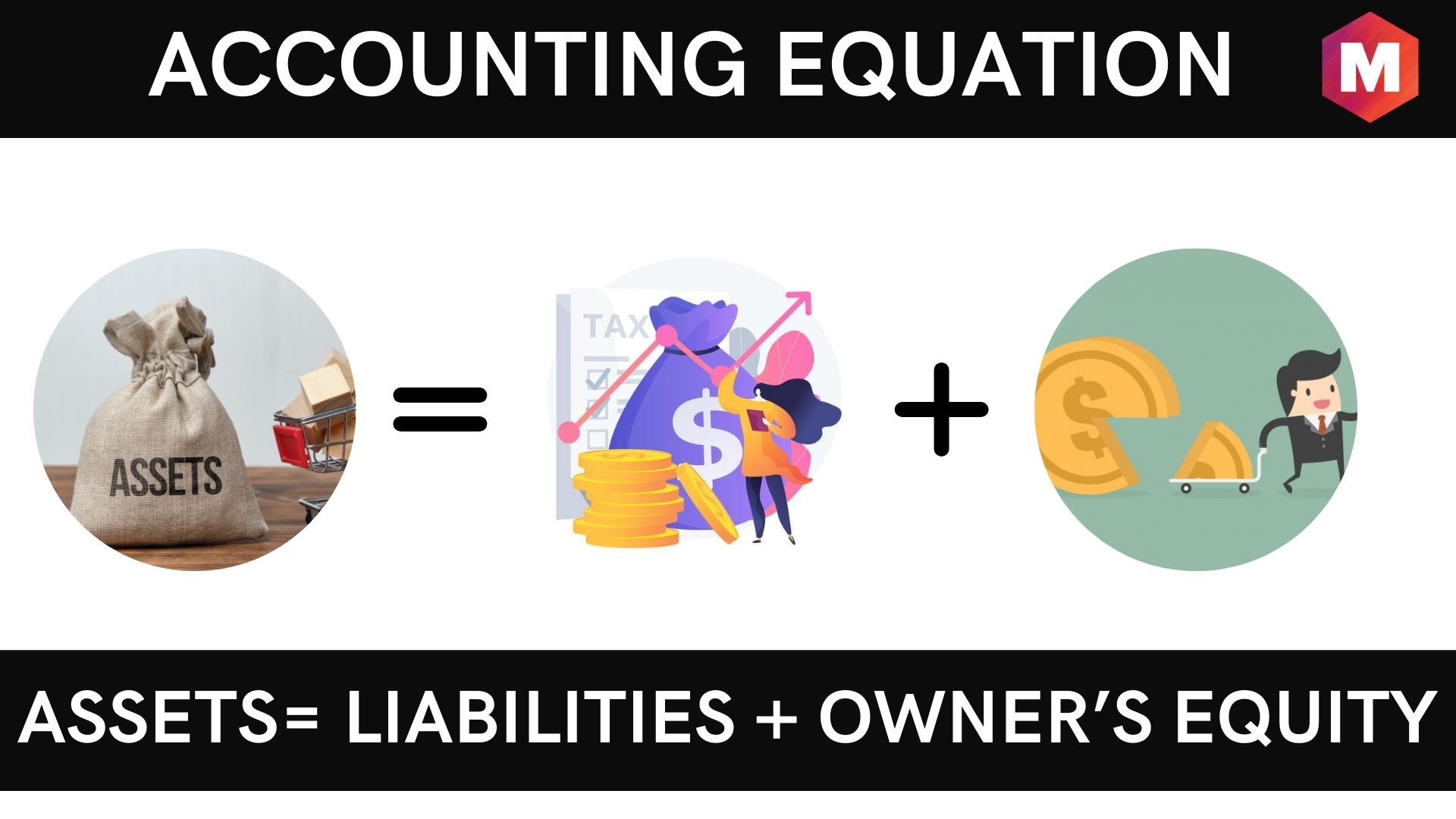
Accounting Equation - Definition, Formula and Applications | Marketing91
Accounting Equation – Definition, Formula and Applications
July 10, 2021 By Hitesh Bhasin Tagged With: Accounting
Table of Contents
What is Accounting Equation?
Definition: The accounting equation is defined as the double-entry accounting system used to represent the relationship amongst assets, liability, and owner’s equity. It ensures that each entry made on the debit side has a corresponding entry on the credit side. It ensures that the balance sheet stays balanced.
The accounting equation is the foundation or fundamental principle of the double-entry accounting system. It is considered the fundamental elements of the balance sheet. The accounting equation shows that a company’s total assets are equal to the sum of its shareholder’s equity and the company’s liability.
Luca Pacioli, an Italian mathematician came up with a basic accounting equation formula in 1494 in his work “A Treatise on Accounts and Records.” Accounting systems of different countries around the world are actually based on the use of this basic accounting equation.
The accounting equation has three components-
1. Assets
Assets are the kind of resources that helps a business to generate revenue and receivables. It includes cash and cash equivalents, Treasury bills, certificate of deposit, accounts receivable, Inventory, or any resource of value that can be converted into cash.
2. Liabilities
Liabilities means the items or resources of value a company owes or needs to pay to a third party. It includes long-term debt, rent, taxes, salaries, wages, utilities, and dividends payable.
3. Owners’ equity or Shareholders’ equity
Shareholders’ equity means the amount that a company needs to return to its shareholders if all the assets were liquated and all liabilities are paid off. Retained earnings are also part of this category.
The accounting equation shows how Assets, Liabilities, and shareholders’ equity are associated with each other.
Accounting Equation Formula
Assets= Liabilities + Owner’s Equity or Shareholder’s Equity
For a balanced accounting equation, the assets must be equal to the sum of liabilities and owners’ equity. This equation lays down the foundation of double-entry accounting. It highlights the structure of a balance sheet.
Let’s take an example of an Accounting Equation:
Total Assets of the Company were INR 500,000
Total Liabilities of the Company were INR 300,000
Total Equity was INR 200,000
The accounting equation will be:
Assets= Liabilities + Shareholders’ equity
500,000= 300,000+200,000
This is an example of a balanced accounting equation.
Foundation of Double-Entry System
The double-entry system in accounting means that there will be a corresponding credit entry for every debit entry. The balance sheet is based on this system. The total assets must be equal to the sum of total liabilities and shareholders’ equity. For a balanced and accurate account, a business transaction must be represented in at least two accounts.
Understand it with an example. Suppose, if a business takes a loan from a bank. Then this transaction will have two effects on the balance sheet. In other words, this transaction will be represented in at least two accounts. Here, on the one hand, the assets of the company will be increased with the borrowed loan amount. It is considered an asset because the company’s bank account will be credited with some amount which is an asset for it. However, on the other hand, the company’s liability will also get increased with the same loan amount. It becomes a part of liability because the company has to return this amount to the bank and the agreed interest.
This is how a double-entry accounting system works. The double-entry system is accepted and adhered to globally. This global adherence makes the account-keeping system and tally system standardized globally, and it is much easier to perform. The accounting equation ensures that every transaction recorded has a dual effect, and there is a relationship between the three components of the balance sheet.
Importance of Accounting/Balance Sheet Equation
The accounting equation is essential for a company because it shows the relationship between assets, liabilities, and equity. Keeping other things constant, when a company’s assets increase, the equity will also increase. An accounting equation captures all these concepts, and it is essential to modern accounting methods.
Limitation of Accounting Equation
There are some limitations of the accounting equation. When accounts are correctly managed, the balance sheet always balances out. But the accounting equation doesn’t provide the investors’ information about the performance of the company. The investors of a company have to interpret the results and decide on the company’s performance by themselves. The investors interpret whether the company has enough assets or many liabilities or is performing well in the financial matter.
Applications of Accounting Equation
As it is clear that the accounting equation is fundamental to the double-entry bookkeeping practice, some of its key applications in the world of economics and accountancy are-
1. Financial statement
The accounting equation comes into play for making quarterly and annual reports of the businesses in bookkeeping practices. It is used in the general ledger of a business to provide the material that eventually makes up the foundation of the financial statements of a business.
2. Double-entry bookkeeping system
One of the most important uses of this equation occurs as the foundation of the double-entry bookkeeping system which is used for keeping track of debits and credits. The equation here ensures that the sum of debits and credits always matches up to the company assets.
3. Income and retained earnings
The income and retained earnings associated with this equation are also essential components in calculating, managing, and analyzing the income statement of a firm. which is used to reflect upon the profits and losses that are themselves determined by using the basic accounting equation. All in all, this equation is useful in finding out revenues as well as make a retained earnings statement of businesses.
4. Company worth
The accounting equation not only provides the principles to make a balance sheet but also plays a key role in estimating the net worth of a company. The key roles of the accounting equation incorporate the calculation of company holdings and company debts that let company owners find out the total value of an asset of the firm.
5. Investments
As an accounting equation is crucial in finding out the net worth of a firm, it is also useful for investors looking to measure the holdings and debts of a company at a given time. It offers key information to banks, creditors, or investors who are either checking the loan application or thinking to invest in the firm.
Wrap Up!
Now, on the concluding note, it is clear that the fundamental accounting or balance sheet equation is effective in representing the relationship amongst-
- Assets
- Liability
- Owner’s equity
The most important thing to know about the accounting equation is its ability to be the foundation for the double-entry bookkeeping system.










